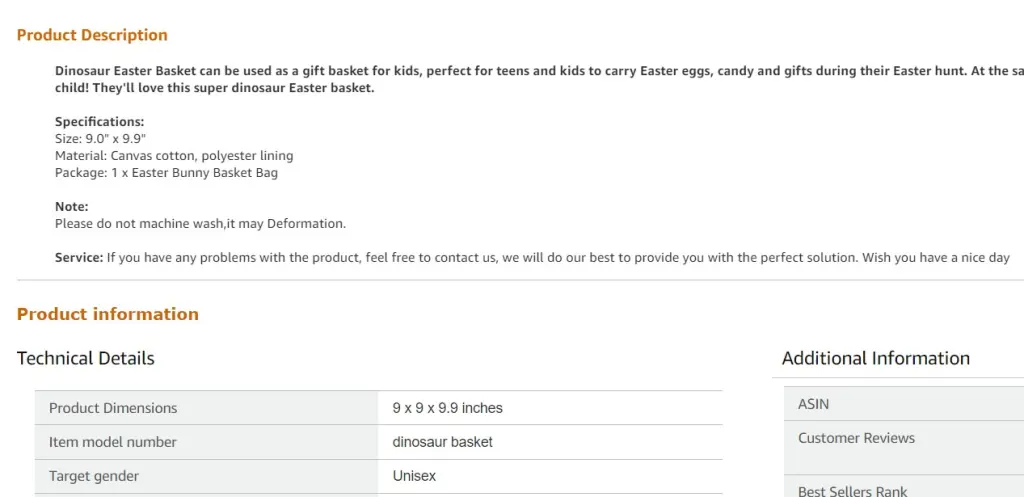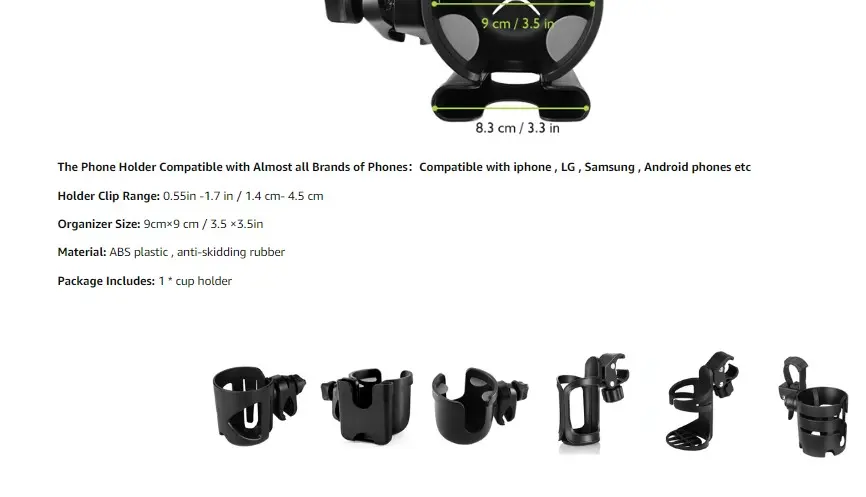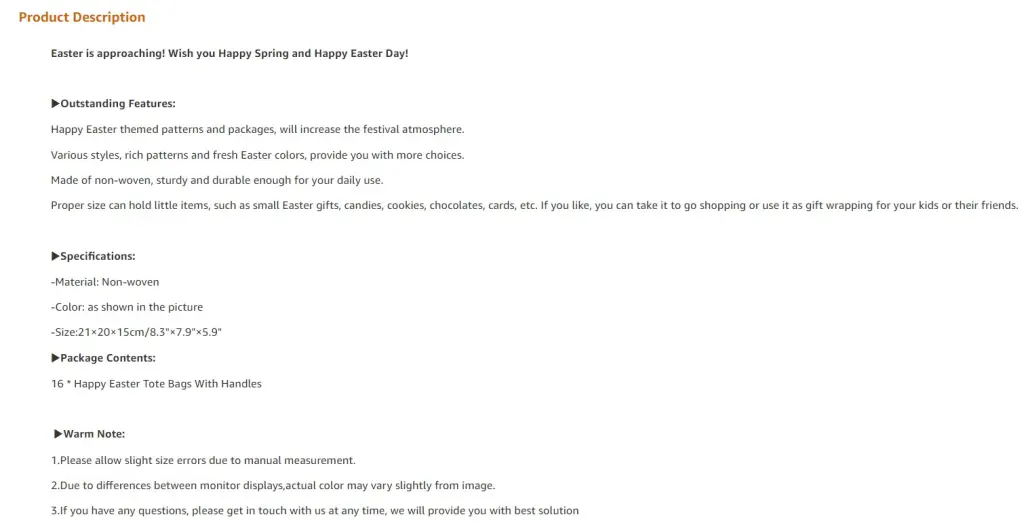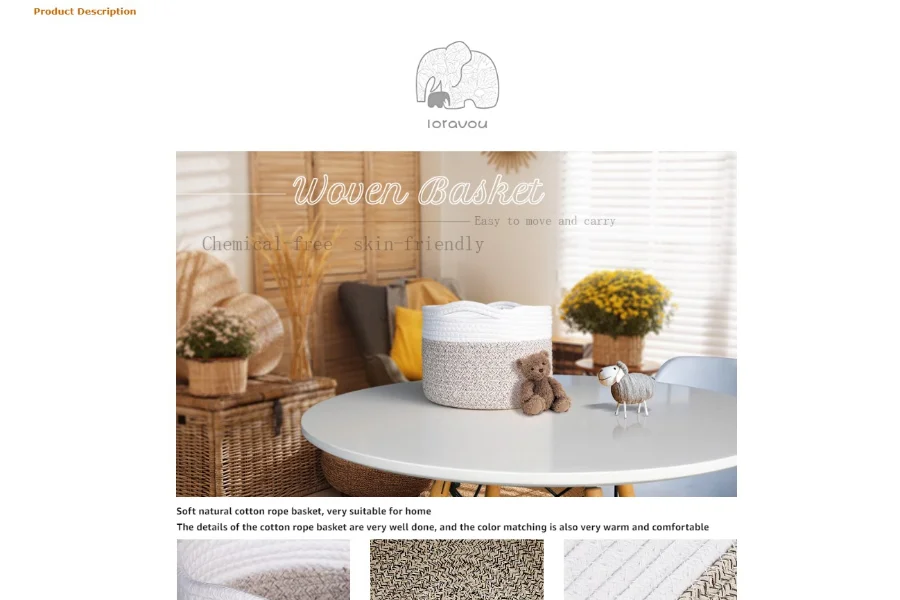Writing a product description is one of the most crucial aspects of being an Amazon seller. Usually, it’s the retailers’ first interaction with shoppers and, sometimes, the only chance they have at convincing buyers to purchase.
As a result, writing product descriptions takes a lot of work. Retailers must enter their buyer’s heads, balance concise and informative messages, and sprinkle in some keywords.
Although it’s a particularly challenging venture, this article discusses everything an Amazon seller needs to know to craft the most effective product descriptions.
Table of Contents
What are Amazon product descriptions and why are they important?
The primary components of an Amazon product description
Tips and tricks to writing the perfect Amazon product description
Wrapping up
What are Amazon product descriptions and why are they important?

Product descriptions are the textual portions of any listing that rest below the title. Besides images, they are what shoppers tend to focus on when clicking through an Amazon product page.
While product titles provide high-level information and attract buyer attention, descriptions give consumers enough details to make informed purchases. Here are other reasons why product descriptions are important:
- Since online shoppers can’t examine products physically, Amazon product descriptions try to replicate that experience.
- Amazon sellers can use product descriptions to boost their visibility and conversions.
According to research, about half of US internet shoppers start their product searches on Amazon.
Based on the report, businesses focusing more on crafting the perfect product listings will get more conversions. How? By paying more attention to their product descriptions—which increases their online visibility, while giving higher search rankings.
But that’s not all. Amazon product descriptions also improve customer experience. Recent studies show that 87% of online shoppers agree that product descriptions are critical when purchasing from Amazon.
The primary components of an Amazon product description

Formatting
According to surveys from PickFu, the product description’s layout is its most crucial aspect. Most consumers expressed that “easy-to-read text with adequate formatting” is even more important than the product’s benefits or description’s title.
Based on this data, retailers must create clear and concise product information. Long or complex descriptions may distract shoppers, causing them to look at other products.
Here are some tips to help sellers create product descriptions with excellent formatting:
- Use shorter sentences.
- Divide information into bullet points.
- Use white spaces to make product descriptions more scannable, easy to read, and engaging.
Check out the case study below for more insights.

The example above utilizes shorter sentences and divides the necessary information into bullet points, making it easy to read.
Keywords
Amazon’s algorithm doesn’t work like magic. Instead, it ranks product listings based on query relevance, conversion rates, availability, pricing, and external traffic.
So, to match offers with the shopper’s search queries, the algorithm scans the keywords in a product’s description.
Note that sellers don’t have to rack their brains for the most-searched keywords. They can use tools to help discover which phrases shoppers are more likely to use when searching through Amazon. Then, sellers can add the keywords to their product descriptions.
One perfect example of a keyword research tool is Keyword Scout. Sellers can use the tool to discover high-converting keywords for their listing instantly and even get insights into their competition’s strategies.
While keywords with extensive search volumes are recommended, retailers must only include those related to their products. In all situations, relevance is more important than popularity.
Pro tip: Sellers should consider using A/B tests on keywords. It will help them discover which ones connect to their audience.
Also, retailers should avoid putting too many keywords in their descriptions. Instead, they can include any extras to their Amazon product pages’ search field.
Product details
Shoppers won’t purchase a product if they don’t have enough information on what to expect. So, sellers looking to boost conversion must create product descriptions containing every detail consumers need to stay informed.
A practical product description should highlight the item’s benefits before listing its primary features. Don’t forget to include weight, quantity, dimensions, guarantees, ingredients, and other necessary information.
Look at the case below:

The product description in the picture above starts by listing the item’s benefits before stating other details like clip range, size, material, and quantity. It also displays the information clearly, making it a good example of how to list the key details.
Tips and tricks to writing the perfect Amazon product description
Consider the audience
Amazon sellers must consider their target audience before crafting their first product description draft. Before choosing an audience, retailers must consider the following factors:
- Who buys their products
- Why they purchase them
- How they utilize them.
Pro tip: The more information sellers have on these three areas, the more relevant the product description will be.
After engaging in some extensive market research, the chances are that retailers already have a pretty clear idea about their target audience. But if it’s not enough, sellers can get more information through the following methods:
- Read their product’s customer reviews
- Search for blogs, social media posts, and videos related to their products on Google
Based on the data, they can decide how to write their product descriptions to fit their target audience. The results will determine the product description’s language and overall tone.
Understand Amazon’s rules
Amazon’s rules also play a significant role in how product descriptions look. Here are the rules sellers must follow to ensure their descriptions remain safe from Amazon’s watchful eyes.
- Sellers must clearly write product descriptions and help consumers understand the benefits and features.
- The product description must not surpass the word limit. Amazon gives sellers 1000 characters to describe their product’s features clearly.
- Product descriptions must not contain any JavaScript, HTML, or other codes.
- Product descriptions must also comply with Amazon’s style guide.
- Sellers must avoid including website URLs, contact info, or anything that encourages shoppers to purchase from them directly or somewhere else.
- Product descriptions should not include customer testimonials, reviews, or quotes. They should also not solicit positive product reviews.
Although some sellers may risk including some prohibited information in their product descriptions, this can lead to Amazon to take down a well-performing listing or even suspend an account.
Keep it simple
Packing excess words into one product description is not a good strategy. Shoppers won’t read blocks of text. Instead, they want descriptions with clear and concise information.
Check out the following product description example:

In this first example, the seller ticks all the boxes. Buyers will know the product’s purpose, its main features, and some of its benefits. However, they listed everything in an unbroken text paragraph, making it hard to read or scan.
The above description may deter shoppers, sending them back to their search results.
Now, examine the second example:

This product looks more straightforward than the first. It concisely displays all the necessary details, making it an excellent template for businesses to structure their product descriptions.
In addition, the second example is more user-friendly, has scannable bullet points, and utilizes subheadings to separate different aspects.
Avoid overselling the product
It’s up to the buyers to decide how good a product is, not the sellers. Hence, overselling an item in a product description wastes word count. Although it seems tempting, exaggerated descriptions don’t have any benefits.
Depending on the product, sellers must get straight to the point and avoid using extra words like adjectives and adverbs. However, some listings (like high-value technology) will require more information than others.
In such cases, retailers should differentiate between providing enough information and overselling the product.
Use EBC to solve description writing limitations

What if retailers have products with captivating stories that are challenging to express in regular product descriptions? They can consider using EBC (Enhanced Brand Content).
EBC allows sellers to include more images and text in their product listings. As a result, they can illustrate all of their product’s benefits to increase conversions.
Currently, Amazon integrated EBC with A+ content. As a result, sellers must enroll in Amazon’s brand registry to access the premium feature.
Wrapping up
Product descriptions are critical to convincing consumers to make purchases. Sellers with well-curated Amazon product descriptions will garner more conversions and sales because buyers have all the necessary details to make an informed order.
Although these tips can help boost the average Amazon seller’s product pages, they must tweak their descriptions continuously to review the impact on conversions and search result rankings.
Alternatively, they can run A/B tests to determine the product descriptions with the best results. Lastly, sellers should note every change they make to their product description to avoid losing their original draft.




